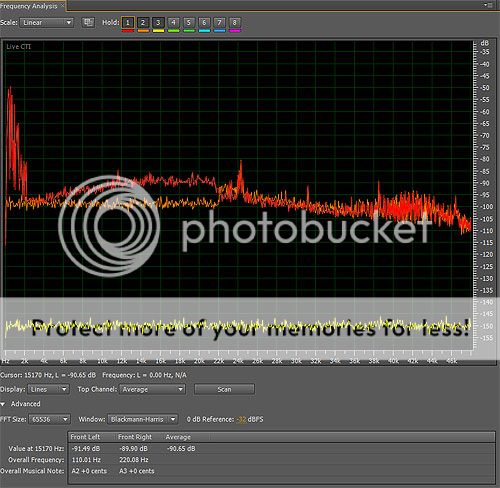In terms of high resolution (24/192) vs. CD (16/44), you have the usual conundrum of whether the format sounds different or does your DAC sound different given the bit depth and sample rate?
The first is a very simple test to do, you can download Adobe Audition (free for 30-days) convert a 24/192 track to 16/44, and then up-sample the 16/44 track back to 24/192 containing 16/44 information. You can then compare the up-sampled 16/44 file to the original 24/192 file by playing both tracks simultaneously, but with one track inverted, and quickly confirm whether the tracks null or not. I.e. they should cancel each other out? You will then find the files null to -96db or thereabouts, proving there is no benefit with 24/192 material, unless you have a HiFi system and ears better than
Nyquist.
What if the DAC sounds different with 24/192 material?
This time you convert a 16/44 file to 24/192 and then A/B the two files. Alternatively, you can record the analogue output using an AD/DA converter like the Lynx Hilo @ 24/192 resolution, which is capable of -100db in the analogue domain (asynchronous USB / balanced analogue loops) and compare as above using Adobe Audition with one file inverted. Basically, all we are doing is recording the output differences from the DAC, deducting one from the other to see what is remaining, and then deciding a little more scientifically whether we are really hearing a difference or is it expectation bias or other.
Same for USB, S/PDIF cables etc etc.
At least then you can deduce whether it's worth the extra expense downloading 24/192 material, or indeed, spending lots of money on cables. Unless you are buying a newly engineered or re-mastered album, I'd wouldn't bother trying to replace your CD purchases with 24/192 purchases. But as a throwaway comment, if studios are recording and mastering in 24/96, DSD or other, I don't see any reason why these formats can't be passed-through to the consumer as a purchase option.
Peter
PS. Hope that didn't get confusing and I made no mistakes. It's late you know!



